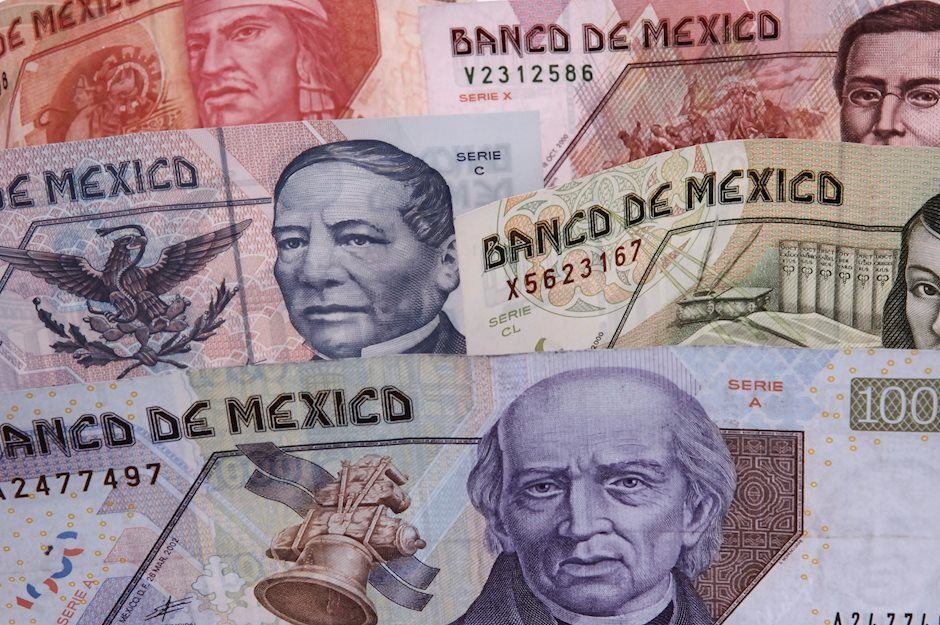Mexican Peso weakens and plunges against US Dollar amid Mexico’s holiday
- Mexican Peso depreciates as local markets close for Benito Juarez’s birthday, USD/MXN aiming above 16.80.
- Banxico is widely anticipated to reduce interest rates slightly amidst a focus on upcoming US economic data and the FOMC outcome.
- Attention turns to key economic reports and central bank decisions in Mexico and the US this week.

The Mexican Peso (MXN) depreciates sharply against the US Dollar (USD) on Monday as Mexico’s markets remain closed in the observance of Benito Juarez’s birth, a former President of Mexico. A busy economic week with both US Federal Reserve (Fed) and Bank of Mexico (Banxico) monetary policy decisions will be the main driver of price action. The USD/MXN trades at 16.85, up 0.88% near new five-day high.
Mexico’s economic docket will remain empty during the first day of the week but gather attention on Tuesday. The docket will feature Aggregate Demand and Private Spending. On Thursday, the schedule will feature the release of Retail Sales data for January, which are expected to recover, followed by Banxico’s decision. Most investors expect Mexico’s central bank to cut borrowing costs from 11.25% to 11% on March 21.
On the other side of the border, US housing data could influence the Greenback’s price ahead of the Federal Open Market Committee (FOMC) decision. Market participants will be looking for any adjustments to the statement, the Summary of Economic Projections (SEP), and Fed Chairman Jerome Powell's press conference.
Daily digest market movers: Mexican Peso on defensive amid dovish Banxico
- The USD/MXN is being driven by the reduction of interest rate spreads between Mexico and the United States. This could bolster and set the USD/MXN direction toward the 17.00 figure.
- On March 21, Banxico is expected to decrease interest rates, even though it could feature a 3-2 vote split. Recent speeches and media appearances show that Banxico’s Governing Council is divided, with Governor Victoria Rodriguez Ceja, Omar Mejia Castelazo and Galia Borja Gomez leaning dovish. On the hawkish front lie Jonathan Heath and Irene Espinosa Cantellano.
- An economic slowdown in Mexico is the main event that could spark Banxico’s first rate cut as the central bank has adjusted its economic projections to the downside. Mexico’s central bank expects the economy to grow 2.8% YoY in 2024, down from 3% and maintaining at 1.5% for 2025.
- Banxico’s private poll in February showed that analysts project inflation to slow down, which could spark the central bank’s first rate cut. They see interest rates at 9.5% and the exchange rate at 18.31 towards the year-end.
- The latest inflation figures in the United States prompted investors to price in a less dovish stance. Money market futures had adjusted their rate cut expectations more in line with the Fed as they foresee the Federal Funds Rate (FFR) at 4.71% toward year end. The next Fed meeting is scheduled for March 19-20 next week.
- The CME FedWatch Tool shows traders decreasing their bets on a 25-basis-point rate cut in June, down from 72% at the beginning of last week to 58% as of writing.
Technical analysis: Mexican Peso begins to weaken as USD/MXN aims toward 16.80
The USD/MXN is at the brisk of shifting neutral bias as buyers had stepped in at around the lows of the year and lifted the exchange rate near the 16.80 area. A breach of the latter could push the pair toward the 17.00 figure. Once surpassed, the next stop would be the 50-day Simple Moving Average (SMA) at 17.02, followed by the 100-day SMA at 17.16 and the 200-day SMA at 17.21.
On the flip side, if the pair stays below 16.80, that could pave the way for a test of last year’s low of 16.62, followed by October 2015’s low of 16.32 and the 16.00 psychological level.
USD/MXN Price Action – Daily Chart
Mexican Peso FAQs
The Mexican Peso (MXN) is the most traded currency among its Latin American peers. Its value is broadly determined by the performance of the Mexican economy, the country’s central bank’s policy, the amount of foreign investment in the country and even the levels of remittances sent by Mexicans who live abroad, particularly in the United States. Geopolitical trends can also move MXN: for example, the process of nearshoring – or the decision by some firms to relocate manufacturing capacity and supply chains closer to their home countries – is also seen as a catalyst for the Mexican currency as the country is considered a key manufacturing hub in the American continent. Another catalyst for MXN is Oil prices as Mexico is a key exporter of the commodity.
The main objective of Mexico’s central bank, also known as Banxico, is to maintain inflation at low and stable levels (at or close to its target of 3%, the midpoint in a tolerance band of between 2% and 4%). To this end, the bank sets an appropriate level of interest rates. When inflation is too high, Banxico will attempt to tame it by raising interest rates, making it more expensive for households and businesses to borrow money, thus cooling demand and the overall economy. Higher interest rates are generally positive for the Mexican Peso (MXN) as they lead to higher yields, making the country a more attractive place for investors. On the contrary, lower interest rates tend to weaken MXN.
Macroeconomic data releases are key to assess the state of the economy and can have an impact on the Mexican Peso (MXN) valuation. A strong Mexican economy, based on high economic growth, low unemployment and high confidence is good for MXN. Not only does it attract more foreign investment but it may encourage the Bank of Mexico (Banxico) to increase interest rates, particularly if this strength comes together with elevated inflation. However, if economic data is weak, MXN is likely to depreciate.
As an emerging-market currency, the Mexican Peso (MXN) tends to strive during risk-on periods, or when investors perceive that broader market risks are low and thus are eager to engage with investments that carry a higher risk. Conversely, MXN tends to weaken at times of market turbulence or economic uncertainty as investors tend to sell higher-risk assets and flee to the more-stable safe havens.
Author

Christian Borjon Valencia
FXStreet
Christian Borjon began his career as a retail trader in 2010, mainly focused on technical analysis and strategies around it. He started as a swing trader, as he used to work in another industry unrelated to the financial markets.


















